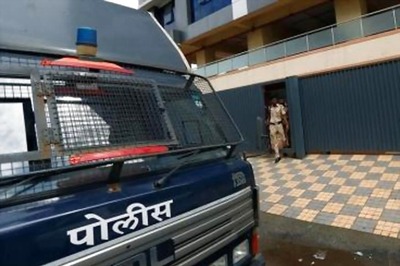
views
Bharat has witnessed a remarkable transformation in the past decade under the leadership of Prime Minister Narendra Modi. From being among the ‘fragile 5’ economies prior to 2014, India became the fifth largest economy in the world in 2023. India is now being called a bright spot in the global economy, as it has successfully navigated the challenges posed by the Covid-19 pandemic and is growing at a 6 per cent GDP growth rate. Global banks from 18 countries, including Singapore and Germany, currently conduct bilateral trade in Indian rupees, which reflects the growing Indian influence.
The unique balance between welfare schemes and economic reforms has been the cornerstone of the Modi government in the last decade. While maintaining a robust economy, India has run welfare schemes such as PM Gareeb Kalyan Yojana, the world’s largest food security program, providing free foodgrains to 81 crore people. Japan and Singapore stand as shining testimonies to the effectiveness of this approach. These nations, while embracing free market principles, have simultaneously maintained robust social safety nets, ensuring that economic progress translates into improved lives for all.
Economic Reforms
“Modinomics” has paved the way for impactful economic reforms, such as the Goods and Services Tax (GST), the Insolvency and Bankruptcy Code (IBC), and strategic corporate tax reductions, aimed at fostering economic growth. Simultaneously, the dedication to public welfare through “Gareeb Kalyan” ensures that the advantages of this growth reach the most financially vulnerable sections of society. This cohesive synergy forms the essence of India’s progress. The economic reforms enhanced business processes, attracted investments, and fortified infrastructure and the welfare schemes ensured a fair and inclusive distribution of prosperity.
One of the key drivers of this balance is the adoption of the Jan Dhan, Aadhar, Mobile (JAM) tech stack, revolutionising economic policies and public welfare. Direct Benefit Transfers (DBTs) and financial inclusion through the Jan Dhan Yojana have not only reduced leakages but also resulted in a saving of 2.7 lakh crores from 2015 till date. In the previous governments, 85 per cent of funds in social schemes were prone to leakage or corruption, a challenge effectively addressed by the successful adoption of the DBT system by the Modi government.
The landmark reform as part of the Modinomics, GST, has streamlined the tax system by replacing multiple indirect taxes with a single tax. It reduced the cost of doing business and increased the tax base. GST taxpayers have doubled to 1.4 crore since its inception in 2016, reporting an average monthly GST collection of Rs 1.5 lakh crore in this financial year. Additionally, IBC helped resolve bad loans, leading to a significant decline in the corporate debt-to-GDP ratio.
Scam tainted UPA government’s policies left a mountain of NPA for the incumbent Modi government. The government’s swift action with the IBC recovered Rs 8.5 lakh crore from defaulters. Notably, corporate tax rate reductions from 30 per cent to 22 per cent for existing companies and to 15 per cent for new manufacturing units contributed to a remarkable rise in the Ease of Doing Business, ranking from 130th to 63rd rank in 2020, and nearly doubling the annual Foreign Direct Investment (FDI) to around $85 billion, creating huge employment.
The ‘Make in India’ scheme has spurred domestic manufacturing, with over 90,000 startups emerging, including 110 unicorns. The Production Linked Incentive (PLI) Scheme has further fueled localised production in key industries such as mobile phones, defence equipment, toy industry, renewable energy and so on. India became the second-largest mobile phone exporter in the world. In 2023, 98 per cent of the mobile phones used in India were manufactured in India. Apple’s recent announcement of manufacturing 1 lakh iPhones in India is a testament to the country’s growing capabilities and attractiveness for major tech players. Apparently, the key indicator of economic success, inflation, stood at 6.7 per cent on average during the UPA rule, whereas it has decreased to 5.6 per cent between 2014-2023, despite the pandemic.
Social Welfare
Modi’s commitment to public welfare is evident in India’s staggering array of welfare programs such as Ayushman Bharat, which ensures health insurance coverage of up to Rs 5 lakh per family, benefitting over 12 crore families till date. Empowering the 11 crore farmers, PM Kisan Samman Nidhi transfers Rs 6000/- into their bank accounts directly for crop assistance. Over 3 crore houses have been built for the rural and urban poor under PM Awas Yojana, ensuring dignified shelter for all. To provide large-scale employment opportunities at the grassroots level, 44 crore loans were disbursed to MSME entrepreneurs and 70 lakh loans to 53 lakh street vendors under PM Mudra Yojana and PM Svanidhi scheme.
Recognising the importance of social justice for sustained progress, Modi has implemented initiatives like the 10 per cent reservation for Economically Weaker Sections (EWS) in educational admissions and government jobs. This ensures equitable access to opportunities, fulfilling the vision of Gareeb Kalyan in its truest sense. A recent NITI Aayog’s report exemplifies PM Modi’s inclusive development outlined by his vision ‘Sabka Saath, Sabka Vikas, Sabka Vishwas & Sabka Prayas’. Over 24.82 crore individuals have escaped the Multidimensional poverty trap in the last 9 years.
The last decade under Modi’s leadership has seen Bharat striking a fine balance between economic growth and social welfare. The integration of social welfare with quintessential economic reforms has not only propelled the nation to the forefront of the global economy but has also uplifted crores of lives in India. In staying true to the BJP’s guiding philosophy advocated by Pandit Deendayal ji, the Modi government has upheld the principle of Antyodaya, ensuring the benefits of the development reaches the very last person in the society. Following the ‘Panch Pran’ described by PM Modi during the ‘Amrit Kaal’ period, India is well on its way to becoming ‘Viksit Bharat’ by 2047.
The author is National Member, BJYM (Policy, Research, and Training division) MBA, IIM Lucknow. Views expressed in the above piece are personal and solely that of the author. They do not necessarily reflect News18’s views.



















Comments
0 comment